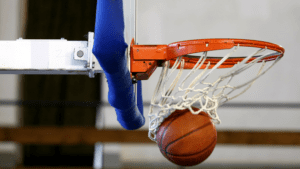Coaches and trainers are known to push their athletes to the limit on a regular basis. Sometimes, it means more running, more drills or increased practice time. Occasionally, it translates into fewer water breaks than necessary and the effects can be tragic, resulting in injuries and even death. All coaches and trainers want the best out of their athletes, but this shouldn’t come at the cost of the safety and well-being of the athlete.
Schedule Breaks
Although coaches regularly attend seminars and training each year that highlight the importance of hydration for athletes, the intensity of the first few weeks of the season can cause a coach to ignore the signs that an athlete may be on the brink of physically shutting down. The best way to avoid this type of tragedy on the field is to plan for water breaks as an integral part of practice. Put a pause on practice every 10-15 minutes and allow athletes a sufficient water break. Have a designated coach responsible for keeping time so that you don’t get caught up in the excitement of any part of the practice and allow it to slip your mind. Keep plenty of water on the field and set up a system in which athletes have easy access to fluids throughout practice.
Direct Communication
Communicate in advance with athletes that they should notify a coach if they are feeling lightheaded or dehydrated. Create an environment that encourages athletes to speak up and take a break on their own if the intensity in practice requires more fluids. Let them know that it doesn’t make them weak or less of an athlete if their body is not responding favorably because of the heat.
Teach What You Preach
Coaches should also teach and model good hydration habits. Carry a water bottle/jug around throughout the day and during practice. Inform the athletes of the importance of remaining hydrated at all times and not just drinking water at practice. A former colleague of mine used to encourage athletes to take a sip of water every time that they passed a water fountain at school. This practice helped eliminate a number of potential problems with dehydration on the field.
Be Aware of Protocol
Many school districts have protocols in place for days in which it becomes too hot to practice. Notifications are regularly given to athletic coordinators informing them of the heat index and when it is no longer safe to practice outside. You can even try holding a portion of your practices inside if possible.
Pay Attention to Details
Be on the lookout for signs that athletes may be overheating. All coaches should be familiar with the procedures put in place to deal with heat stroke, dehydration and other emergencies. Be quick to respond to potential dangers and always err on the side of caution.
CoachUp is the safest and easiest way to find a coach for personalized training. With our 100% money-back guarantee and vetted coaches, anyone can achieve their full athletic potential. Find your perfect coach today and become the athlete you want to be!
How useful was this post?
Click on a star to rate it!
Average rating 0 / 5. Vote count: 0
No votes so far! Be the first to rate this post.



